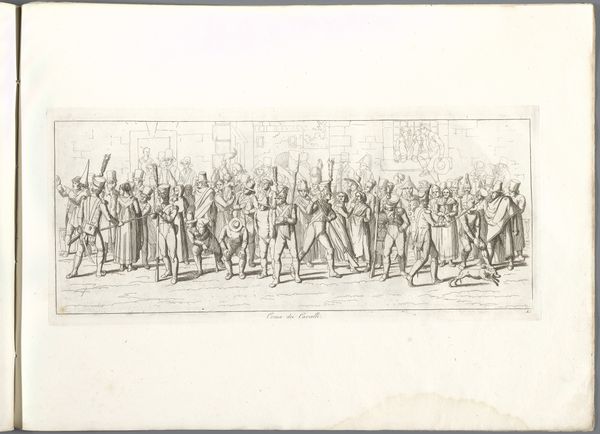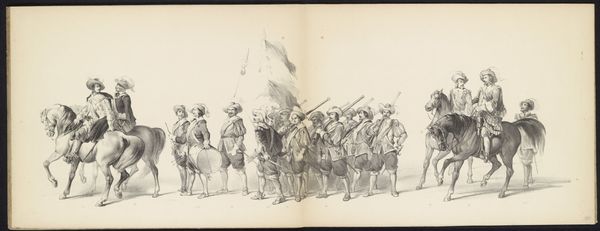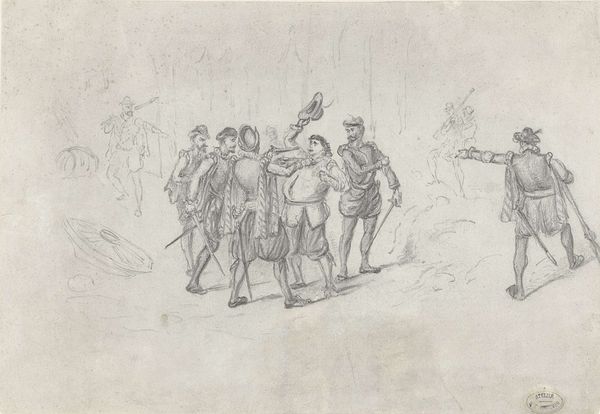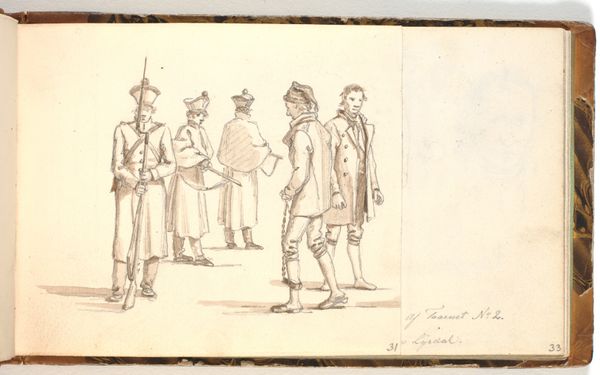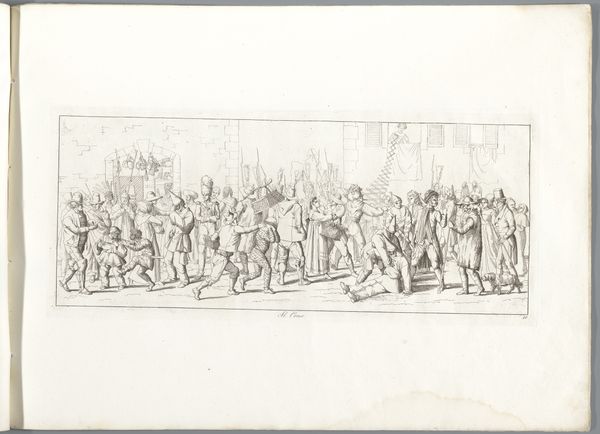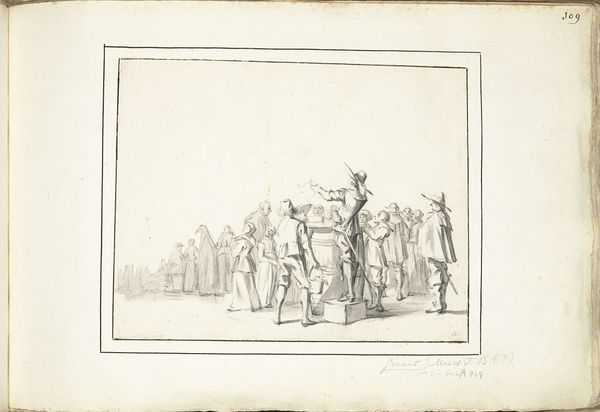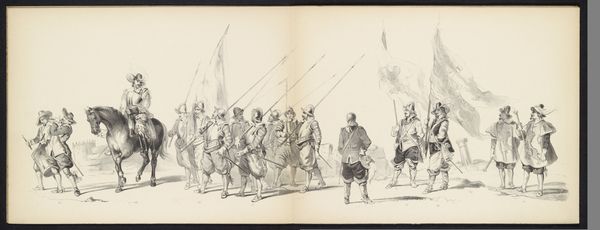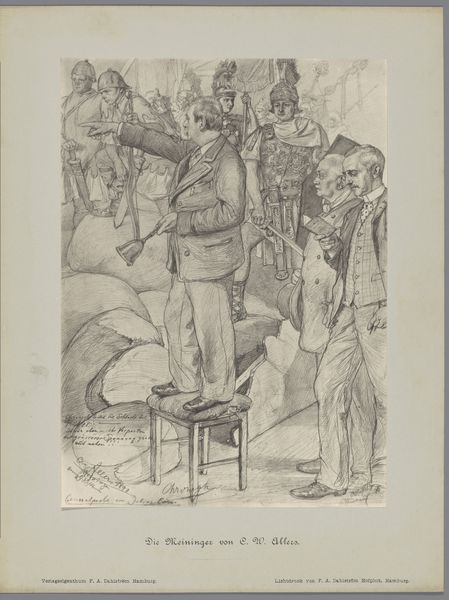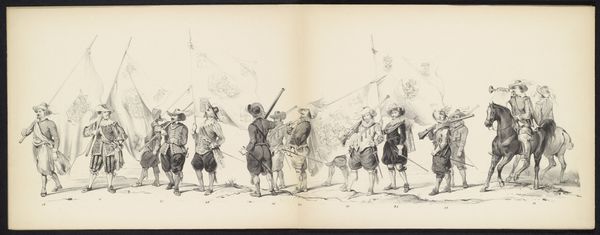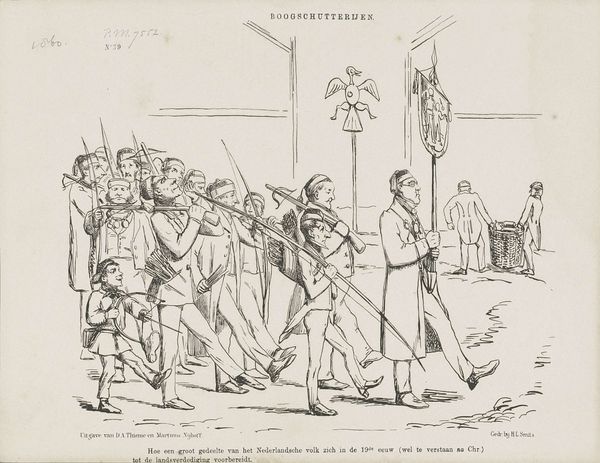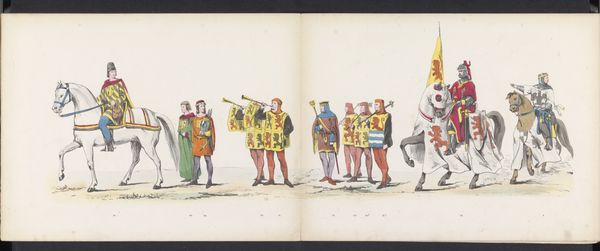
Maskerade van de Leidse studenten, 1865 (plaat 6) 1865
0:00
0:00
drawing, ink, pen
#
drawing
#
narrative-art
#
pen sketch
#
figuration
#
ink
#
pen-ink sketch
#
line
#
pen work
#
sketchbook drawing
#
pen
#
genre-painting
#
history-painting
#
academic-art
#
sketchbook art
Dimensions: height 275 mm, width 720 mm
Copyright: Rijks Museum: Open Domain
Editor: This is "Maskerade van de Leidse studenten, 1865 (plaat 6)" by Jan Daniël Cornelis Carel Willem baron de Constant Rebecque, made with pen and ink. It’s a busy scene; a parade of people on foot and horseback. What draws your attention here? Curator: Immediately, the process. It's an ink drawing, a reproductive method born of technological advancements allowing for wider distribution of imagery. Consider the social context of this piece: students. Who are they? What are their social roles and economic situations which affords them the luxury of education? What labour supported them and allowed for the production of this work? Editor: So you’re thinking about how this image circulates, and the labor involved in creating it and depicting it? Curator: Exactly. The "Maskerade" or Masquerade – speaks volumes. Who makes the costumes, from what fabrics? What social messages do they hope to convey through the act of dressing up? What meaning does it carry within this specific social class of students? This isn't just idle entertainment; it's a display and negotiation of status through material culture. What were they trying to say? Editor: That makes me think about the specific costumes too – the style of the garments worn is quite historicizing. The image is more than just about having fun; there’s clearly intention put into material representation and perhaps historical connections within the procession? Curator: Precisely. Consider the materials themselves: ink and paper readily available. Who has access and what power does this afford them to create imagery to begin with. The reproduction enables these symbols to circulate and re-assert power on a potentially mass scale. Do you think there are hints of a hierarchy? What does it imply? Editor: The people on horseback appear much wealthier or noble in terms of power, with the group near the middle with similar boxy-garments seeming the most grounded, but are presented to seem comedic with how they're holding shields. Curator: Fascinating how a seemingly simple image can reveal so much about production, social structures and power relations. Editor: I'll definitely look at art differently now. Considering not just what is depicted, but how and why. Thanks!
Comments
No comments
Be the first to comment and join the conversation on the ultimate creative platform.
